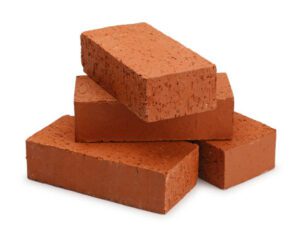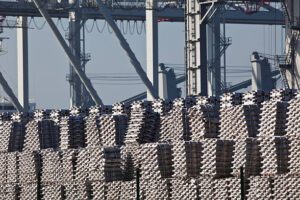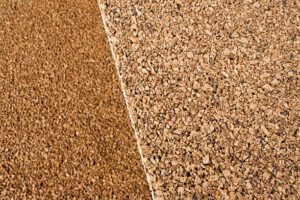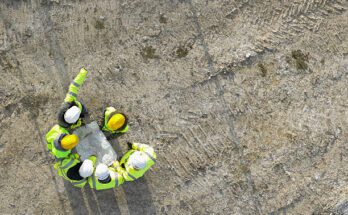The term “construction waste” refers to the relatively clean, heterogeneous building materials that are left over after finishing a project. Ecology is seriously endangered by construction trash. This has increased pressure on the construction industry to think about appropriate environmental protection strategies for all sectors of the economy, including building.
Depending on the circumstances and the kinds of materials employed, different projects will produce different amounts and types of construction waste.
Construction waste types and recycling techniques
-
Brick
 (Photo from istock)
(Photo from istock)
During demolition, the production of brick waste occurs, often containing plaster and mortar contaminants. Construction crews occasionally combine these leftovers with other materials like wood and concrete. They currently recycle bricks by crushing them and utilizing the resulting material as filler.
-
Concrete
Concrete wastes may result from activities like evaluating concrete samples and tearing down old buildings. Recycling procedures for concrete waste frequently employ this crushed concrete as aggregate.
In addition to building road bases and trenches, this crushed concrete aggregate has been utilized to replace natural aggregate in fresh concrete.
-
Ferrous Metal
 (Photo from istock)
(Photo from istock)
Another sort of waste that is both very valuable and capable of being recycled almost entirely is ferrous metal. Ferrous metal can also be recycled numerous times.
-
Masonry
Using recycled masonry aggregate to make thermally insulating concrete is a unique use. The use of recycled masonry aggregate as a filler in conventional clay bricks is an additional possible usage.
-
Non-ferrous Metal
 (Photo from istock)
(Photo from istock)
Aluminium, copper, lead, and zinc are among the nonferrous materials that are dumped at building sites. Almost all of these materials can be recycled.
-
Paper and Cardboard
Another sort of waste, estimated to make about one-third of the volume of construction and demolition wastes, is paper and paper board. To create new paper goods, these waste components are recycled and reprocessed.
-
Plastic
Gathering and cleaning these items individually enables efficient recycling of plastic waste. Combining plastic trash with other plastics or pollutants complicates the recycling process.
Manufacturers can reuse plastic in various products, including street furniture, roof and floor coverings, PVC window noise barriers, cable ducting, and panels specifically designed for using recycled plastic.
-
Timber
 (Photo from istock)
(Photo from istock)
After cleaning, de-nailing, and sizing, whole timber from construction and demolition projects can be quickly and immediately utilized for reuse in other construction projects.
Sources of Construction Waste Generation
- Design origin
- Source for purchases
- Source handling of materials
- Action source
- Remaining source
- Extra sources
Problems with Construction Waste
- Waste is a byproduct of industrial and human activity that has no further use.
- Want for comprehensive control of construction trash at every location.
- Every employee, from management to operational levels, should contribute to the management of construction waste.
Vitality of Recycling
 (Photo from istock)
(Photo from istock)
- Reduce the demand for new resources.
- Low the cost and effort of transportation and production.
Recycling Obstacle
- Lack of recycling facilities at the construction locations.
- Lack of the necessary technology act as obstacle.
- Absence of knowledge
Consideration for Recycling Construction Waste
- Economy
- Relationship to other materials
- Material characteristics
Here’s a list of Sustainable Building Materials for Eco-Friendly Construction.
- Sustainable building materials are becoming more and more popular as environmental preservation becomes a top issue for more people.
As they look for methods to improve their procedures, architects, builders, and homeowners can reduce their environmental effect by using sustainable building materials.
-
Bamboo
 (Photo from istock)
(Photo from istock)
Bamboo is a sturdy, long-lasting, and significantly lighter alternative to traditional wood than hardwood.
-
Hempcrete
This organic substance is perfect for environmentally friendly building because it may take the place of elements like concrete, wood, and insulation. The building’s usage of Hempcrete enables resource conservation and lessens the impact of construction on the environment.
-
Cork
 (Photo from istock)
(Photo from istock)
Cork is a superb insulator in addition to being fireproof, waterproof, and mold-resistant. It doesn’t produce any damaging air pollutants and emits less CO2 than other materials. It offers outstanding acoustic insulation and is a fantastic choice for soundproofing purposes. Due to its strength, light weight, and ease of molding, cork is an excellent material for many applications.
Cork flooring is comfortable and has a unique, lovely, and magnificent appearance. Cork is an excellent wall covering since it not only gives each room a unique decorative aspect, but also helps to regulate the temperature inside and absorb extra moisture.
-
Straw Bales
Because of its inherent insulating qualities, straw bales are a sustainable building material from an environmental point of view. With an R-value comparable to cellular insulation, straw bales may significantly save energy expenditures and insulate homes.
-
Recycled Plastic
 (Photo from istock)
(Photo from istock)
Recycled plastic is becoming increasingly popular as a sustainable building material. This recycled plastic is a sustainable option since it lessens plastic pollution and preserves natural resources.
A building project can employ recycled plastic for a variety of components, including window frames, decking, and outdoor furniture in addition to siding, roofing, and insulation. It is a robust and long-lasting substance that withstands extreme weather, UV exposure, mold, rot, and water. Recycled plastic building materials also endure a very long time; some estimation put it at up to 50 years. The utilization of recycled plastic materials also has a number of positive environmental effects.
Conclusion
In conclusion, construction waste is a significant concern in the building industry, with diverse types and causes. From demolition debris to excess materials, the impact on our environment and resources is undeniable. However, there is hope on the horizon through the implementation of effective recycling strategies.
By categorizing waste materials, segregating them on-site, and promoting responsible disposal practices, we can minimize the environmental footprint of construction projects. Recycling and reusing materials, such as concrete, steel, and wood, not only conserve natural resources but also reduce the volume of waste sent to landfills. Additionally, embracing innovative technologies.
It is imperative that all stakeholders, including contractors, builders, and policymakers, work in unison to establish stringent regulations and promote awareness about the importance of waste reduction and recycling in the construction industry.
Reference:
The Constructor
A COMPLETE GUIDE FOR YOUR WARDROBE:
How to Style Your Wardrobe




